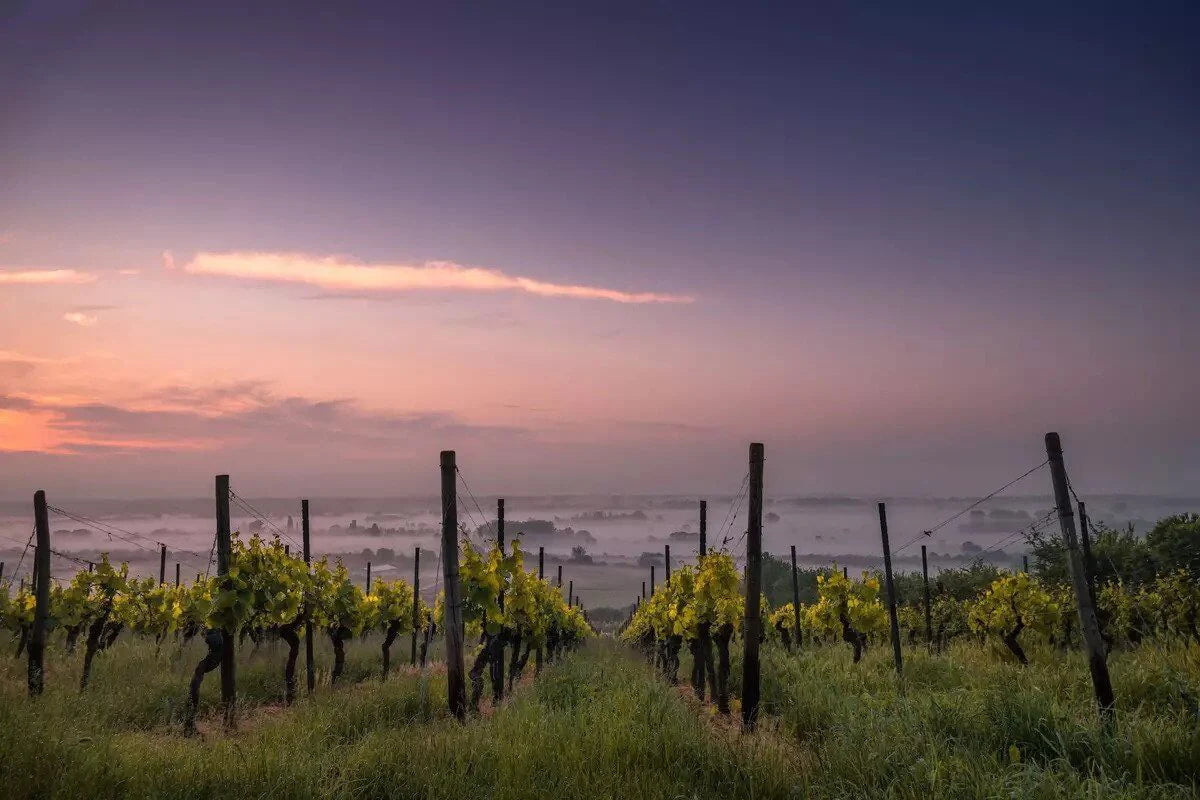Often forgotten in the shadows of the Andean Malbec of Argentina, Chile has been quietly making exceptional wine for decades. With over five centuries of wine production, and a more recent shift towards making more international styles the country has garnered some high praise from top critics. Chile may be somewhat new on the internationally renowned wine scene, with top producers picking up the ever-coveted triple-digit scores, but the region certainly isn’t new to making high-quality wine.
Grapevines first made their way into Chile by way of the Spanish Missionaries. The Spaniards spread the seeds (literally seeds not grafts or scions) of the Spanish Mission grape throughout Chile for their sacramental wine. Natives to the region took a liking to the product and continued to pursue their own viticultural endeavors with what is now called the Pais grape. It wasn’t until the 1800s with the arrival of Claudio Gay that Chile got access to the French vines that now dominate their vineyards.
As with most wine-growing countries, Chile has had its share of hardships. Up until very recently, Chile thought that it was growing world-class Merlot and Sauvignon Blanc. It turned out after genetic testing, that they have instead been growing Carmenere and Friulano. This is certainly something that is a bit of an embarrassment more so than something truly traumatic. The wine produced is still top-notch, just made from a different grape than originally thought. It also meant that Chile had essentially been maintaining vineyards of what was largely regarded as an extinct variety of grape.
Chile runs roughly 3000 miles north to south, giving the country a wide range of climates to grow its grapes in. In the North the climate is arid, around the Atacama desert, the further south regions are significantly cooler, with shorter growing seasons with more water. Chile’s long shape in combination with the climatic effects of the Andes to the East and the Pacific to the West give the country a unique series of growing environments. These factors also provide for a certain amount of isolation which has protected the country from an invasion of the infamous root louse Phylloxera. This gives wine growers the opportunity to grow vines on their own rootstocks instead of grafting to a louse-resistant clone.
The Growing Regions (North to South)
Atacama
This region is incredibly arid, the grapes grown here are most often used for distilling into Pisco.
Coquimbo
This region also produces a large number of grapes for distilling. There are two sub-regions that are coming up in their own right for quality winemaking. The Elqui and Limari Valleys have cooler climates more suitable for serious wine growing.
Aconcagua
This is quickly becoming one of Chile’s most prominent wine-growing areas. The Valle Aconcagua is home to Errázuriz which is a favorite of wine critic James Suckling. Two other sub-regions lie in Aconcagua, Casablanca, and San Antonio valleys are located on the pacific side of the country and provide for a very cool growing region ideal for light crisp white varieties.
Valle Central
This valley sits just south of Chile’s capital, Santiago, and is thus one of the most established regions. The Main Valley subregion is home to some of the country's top performers and provides grapes to some of the best blends. Wineries of notoriety include Concha y Toro and Santa Rita. The other subregions are Maipo Valley, Curico, and Rapel Valley. These other sub-regions are largely occupied by vineyards destined to be bulk wine, but many smaller craft producers are popping up and holding their own.
Sur
This is a sparsely planted region that has started to shift into producing wines from more international varieties such as Sauvignon Blanc, Chardonnay, and Pinot Noir. There are three sub-regions Itata, Bío Bío, and Malleco.
Austral
This is the region that lies the furthest south of the country. Winemaking is still somewhat exploratory here. The little wine that is produced is mostly Pais, Muscat of Alexandria, and more serious producers focusing on Pinot Noir and Chardonnay.
At this point in the Northern Hemisphere, we have really only seen a very small handful of what Chile has to offer. Even given the fact that there have been a handful of wines from this beautiful country to receive coveted awards and high critical scores, the best is certainly yet to come.
Big Hammer Wines
The wine experts at Big Hammer Wines taste thousands of wines every year from around the globe, looking for quality and value. This special offer reflects the passion we have for our clients.
Discover the world through its wines, Click Here! Visit Bighammerwines.com and become a wine expert!




Share:
An Italian Wine Experts Guide to Rome: Experience Rome Like a Local
Italian Bollicine Sparkling Wines
Comments Section